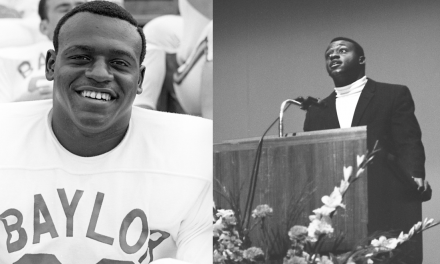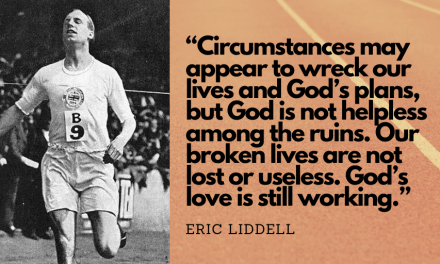In 1891, James Naismith nailed two peach baskets ten feet off the ground at opposite ends of a gym in Springfield, Massachusetts. Basketball was born. One hundred years later, Michael Jordan perfected the game. When he retired after the 1998 season, it was clear that he was the greatest of all time, the pinnacle of excellence in the sport that Naismith invented.
Jordan and Naismith. If you had to distill basketball down to only two names, it’s those two.
But what would the game’s founder think about the man who came to define its meaning? How did their visions for the sport compare? With Jordan central in the minds of sports-starved Americans tuning in to ESPN’s The Last Dance, it’s a question worth pondering today.
We can start with some obvious differences. Perhaps most important: basketball’s inventor simply did not care about winning. He only played the game a couple of times in his life. And while he did coach, serving for nine years in that role at the University of Kansas, he remains the only men’s basketball coach in school history with a losing record. That record did not bother him in the least. Given a choice between coaching and playing, he preferred option “C”: refereeing.
There was logic to Naismith’s madness—a theology, even.
Basketball was invented at a training school for future leaders of the YMCA. And the Young Men’s Christian Association took the “C” in their name seriously back then. For Naismith—a former seminary student—athletics and physical education provided a way to form Christian character and convictions in young people. Naismith wanted a game that could do this, but without the brutality and violence of football. “Personal combat without personal contact”—that was his vision for the sport.
Seen in that light, Naismith’s preference for the referee role makes sense. It was their job to oversee the conditions under which the game was played, to cultivate its character-growing soil. If officials could ensure that the rules were followed and enforced, then players could grow and flourish.
“While we may say that athletics affect the character of the player,” Naismith wrote, “it is in reality the regulation of the game that develops good character in the individual.”
With character development as his ultimate goal, wins and losses mattered little. Beyond his record in basketball, perhaps the best example of this came from Naismith’s novel strategy for Kansas’s football team. “The wiry little man should play the line. He is already developed in speed and needs the work that the line would give him,” Naismith suggested. “The big heavy man should play in the back field, where he would be given a chance to develop the slow part of his body.”
Such a plan, of course, would put any team at a distinct disadvantage. Yet it would also give players an opportunity to work on their weaknesses, a strategy that aligned perfectly with Naismith’s ultimate aim in sports.
Michael Jordan may well serve as the antithesis of this approach. Jordan is the ultimate winner, the unbeatable athlete of the 1990s. His obsessive competitive streak is well-known. Not just in basketball, but in all areas of life, Jordan wanted to prove himself, to come out on top, to win. If that meant he needed to intimidate or demean teammates, as we see up close in The Last Dance, then so be it.
On the one hand, then, we have a character-building professor who sought to spread Christianity through sport. And on the other a winning-obsessed athlete who rarely—if ever—made his faith a matter of public importance. Clearly, Naismith and Jordan were not cut from the same cloth.
And yet if we look closer at these two central basketball figures, we can see surprising areas of shared values and interests.
Jordan wanted to win, yes. But perhaps just as much, he loved the challenge. He loved to compete. This is a man who quit basketball at the height of his powers to take up a sport he hadn’t played since high school. A man who came out of retirement for a second time to give it one more go with an aging and creaking body. This was an athlete Naismith could respect, one who sought out impossible challenges.
The two could also bond over their shared suspicion of the coach.
Naismith was always wary about the increasing power coaches had in his sport. Writing in the 1930s, Naismith warned about rule changes that “mechanized the game taking it largely out of the hands of the players and giving it to the coaches.” He complained about witnessing games in which players seemed only to “execute some play in which they had been thoroughly drilled.”
Basketball, in his view, was made for the players. It was a space for them to explore, to create, to become better versions of themselves—limited only by the rules that officials were to dutifully enforce.
Coaches could sometimes get in the way of this. It’s a sentiment with which Jordan—at least the Chicago Bulls version of Jordan—would likely sympathize.
Of course, Naismith emphasized the team concept, too. “In no other game is cooperation so necessary,” he proclaimed. Yet he also delighted in the new moves that players discovered. He never envisioned the dribble when he invented his game. But when it came about, Naismith championed the “spectacular and exciting” tactic and the imaginative possibilities that it opened.
Even though basketball was still an earth-bound game made up of set-shots and plodding centers when Naismith passed away in 1939, it’s hardly a stretch to see him enthralled by the brilliant airborne play of Jordan. Is there a better representative of “personal combat without personal contact”? Jordan did not overpower his opponents with brute strength, but by going over, around, and between them.
There is at least one more thing Naismith would appreciate about Jordan: his role as a global ambassador for the sport.
Although Naismith saw basketball as part of his Christian mission in life, he did not hold it tightly. He gave it away for all to enjoy, supporting its spread beyond its white Protestant origins to a diverse constituency made up of men and women. “I want to leave the world a little bit better than I found it” Naismith explained when asked to describe his core philosophy. If the game could bring some good, then it was doing God’s work.
Basketball, unleashed and unbound after 1891 to captivate, bring joy, and cultivate character, could do that. Naismith would no doubt approve of the extent to which Jordan popularized the game across the globe and encouraged its growth.
Naismith and Jordan had plenty of differences, of course. Yet I think what they shared is more important. Were Naismith alive today, he would probably be counting down the hours every week until the next episode of The Last Dance—grateful that in some small way, Jordan and the game of basketball are able to bring joy to people’s lives at a time when we need it most.
 About the author: Paul Putz is the Assistant Director of the Sports Ministry Program at Baylor’s Truett Seminary. He is also the editor of this website. You can follow him on Twitter or read more of his writing on the intersection of sports and Christianity at his website.
About the author: Paul Putz is the Assistant Director of the Sports Ministry Program at Baylor’s Truett Seminary. He is also the editor of this website. You can follow him on Twitter or read more of his writing on the intersection of sports and Christianity at his website.






